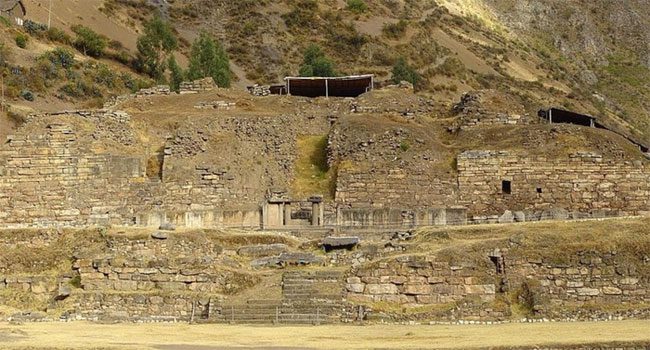In Peru, a group of archaeologists has recently discovered a “sealed” corridor dating back over 3,000 years.
This corridor, known as the “Condor Corridor,” is believed to lead to other rooms within a large temple that once belonged to the ancient Chavin culture.
According to Reuters, the Chavin de Huantar archaeological site is located approximately 190 miles (306 km) northeast of the capital city, Lima. It was an important center for the Chavin culture, which flourished from around 1500 to 550 BCE.
The Chavin civilization is renowned for its impressive artworks, often depicting images of birds and jaguars. These ancient people inhabited the northern highlands of the Andes Mountains in Peru thousands of years before the rise of the Inca Empire.

El Castillo, part of Chavin de Huantar, where archaeologists discovered the entrance to an ancient temple in Peru “frozen in time.” (Photo: Martin St-Amant/Wikimedia).
Recently, archaeologists have focused on a corridor within the southern section of the temple.
This specific area had been sealed off due to being considered less important than other parts. However, the recent discovery has provided valuable insights into the early stages of the Chavin civilization.
Archaeologist John Rick stated that the artifacts found here have been “frozen in time,” according to Reuters.
Within the corridor, the research team uncovered a significant artifact: a large ceramic piece weighing approximately 17 kg.
This ceramic piece is adorned with the head and wings of an Andean condor or vultur gryphus. Additionally, a ceramic bowl was found. These items were excavated in May 2022 when the entrance to the corridor was discovered.
In ancient Andean civilization, the Andean condor or vultur gryphus held significant meaning. With its large size, it was associated with power and prosperity.
The tomb complex includes staircases and a network of corridors, with these discoveries newly revealed.
John Rick, an archaeologist from Stanford University, noted that a significant portion of the tomb complex remains unexcavated.
To explore the entrance to the “Condor Corridor,” Rick’s research team utilized a camera mounted on a robot. This method allowed them to navigate through debris that filled the corridor over time while minimizing the risk of further damage to the ancient architecture.
Chavin de Huantar was recognized as a UNESCO World Heritage site in 1985, serving as a leading example of education, science, and culture by the United Nations.
Research on Chavin de Huantar
Archaeologists are continuing discussions about the religious rituals conducted during the golden age of Chavin de Huantar.
In the 1970s, Peruvian archaeologist Luis Lumbreras visited the site and had the opportunity to gather historical information through oral narratives from local residents.
According to their understanding, the term “Chavin” derives from the Quechua term “chaupin,” meaning “center,” emphasizing its significance to the indigenous community at the time.
After conducting investigations at the site, Lumbreras proposed a theory suggesting that the elites within the community may have been responsible for developing rituals at the temple.
He also hypothesized that they may have encouraged their followers to visit the temple as a means of maintaining political and social structure.


















































